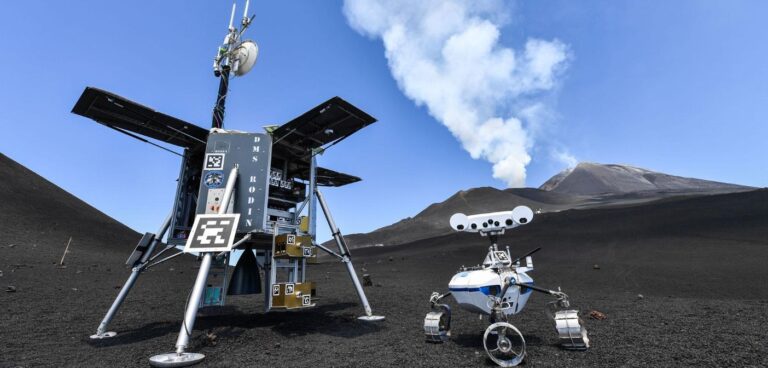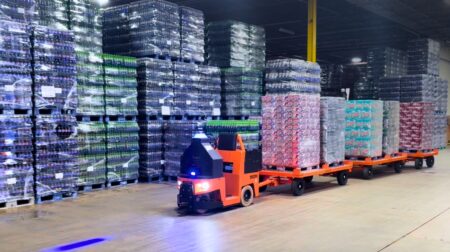A team of robots from the German Aerospace Center (DLR) have been practicing for lunar exploration on the surface of a volcano that is inaccessible to humans.
The landscape of the Sicilian volcano Etna has a loose, coarse-grained texture made from solidified lava layers that resembles the surface of the moon and thus offers a suitable terrain for the test environment.
“Teams of mobile robots have an important role to play in future space missions,” said Dr Armin Wedler, project manager at the DLR Institute of Robotics and Mechatronics.
“In heterogeneous teams, the robots complement and support each other with their different skills. They serve as an extension of the human arm and eye.”
The exploration test was divided into two missions. ‘Geological Mission I’ involved two robots travelling together autonomously alongside an Ardea drone, a micro aerial vehicle developed by the DLR.
Robot LRU1 (light weight rover unit 1) evaluated soil samples with its cameras and was considered the ‘scientist’ in the team.
LRU2 was the ‘assistant’ robot. During the mission, it collected soil samples and either brought them to the lander or analysed them using laser induced breakdown spectroscopy (LIBS).
LIBS involves pointing a strong pulsed laser beam at a given sample, which then partially evaporates. The resulting plasma is used to identify different elements.
LRU2 carried material boxes, tools and ensured that LRU1 was constantly connected to Wi-Fi.
The Ardea drone mapped the area for the team in a ‘scout’ role. As Mount Etna is prone to strong winds, Ardea and LIBS could not be used for every run.
In addition to LRU1 and LRU2, an Interact Rover collected rock samples and brought them to the lander.
The interact rover used a camera arm and a gripper arm to provide haptic feedback, which helped off-site scientists better understand the texture of the samples.
The rover was likewise equipped with a Wi-Fi repeater to help maintain continuous connection with the control room.
‘Geological Mission I’ was conducted by Earth-based scientists, whereas ‘Geological Mission II’ will involve controlling the robots from a station in orbit. The machines will also be guided by an astronaut, rather than moving autonomously.
The third scenario, the ‘LoFar Experiment’, involved the robots’ installation and maintenance of a low-frequency radio antenna (LoFar, meaning Low-Frequency Radio Array).
This experiment could serve as a simulation of the process of installing an antenna system on the dark side of the moon, which would potentially offer humanity a new pathway into the depths of space.









